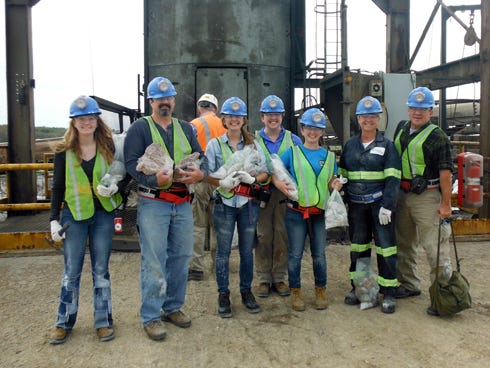
On Nov. 14, several Northwest Florida State College students from Dr. Jon Bryan’s “Principles of Geology” courses took a field trip to the Cote Blanche Salt Mine in coastal Louisiana. The students descended nearly one-third of a mile (1,600 feet) below sea level in a vertical mine shaft into a giant salt dome.
The salt was deposited in an arid, briny, early Gulf of Mexico during the Jurassic Period, when the supercontinent Pangaea was first splitting apart.
As the salt layer became evermore deeply buried beneath younger rock and sediment, heat and pressure caused the salt to flow and force its way upward through miles of overlying rock, creating an enormous, water tower-shaped pillar or dome called a salt diapir.
The Cote Blanche diapir is one of five such domes in coastal Louisiana that is close enough to the surface to be mined for its salt. Cote Blanche salt is mined for road salt (used to melt snow on icy roads in the north) as well as for animal feeds, water softeners and other industrial applications.
Bryan, who has led geological field trips for more than 25 years, said descending so deep into the Earth was other-worldly, like going to Mars or the moon. He said this trip was probably the most amazing thing he has ever experienced.
This article originally appeared on Crestview News Bulletin: Salt of the Earth: Northwest Florida State College students journey into salt mine
